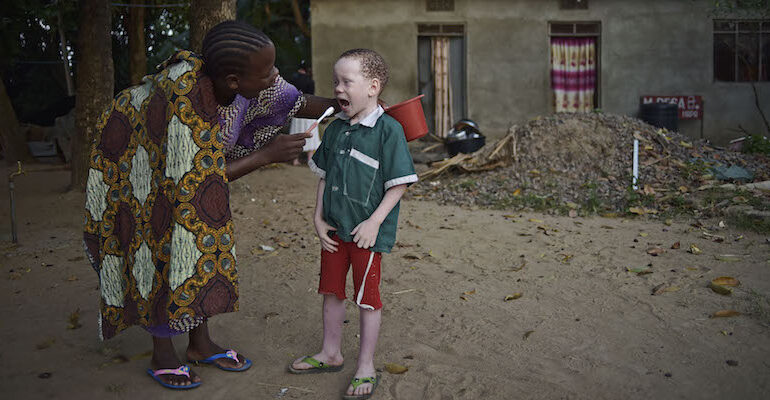It is located in Tanzania and has long hosted dozens of people with albinism, who have suffered violence of all kinds
Ukerewe is the largest island in Lake Victoria, which in turn is the largest lake in Africa. It is part of Tanzania – although the lake is partly part of both Kenya and Uganda – and is known for being considered “the island of albinos”. Dozens of albinos live here, that is, people suffering from albinism, a disease that causes partial or complete lack of melanin pigmentation in the skin, hair, and eyes. It is not known exactly why this remote island in Lake Victoria has become the place with one of the highest concentrations of albinos in the world: some theories maintain that many albinos – particularly those persecuted in several African countries – have moved to Ukerewe after being expelled from their home communities.
Albinism is much more widespread in Africa than in the rest of the world (one in 5 thousand people suffer from it in Africa, compared to 1 in 20 thousand in Europe and the United States). The very pale skin of albinos burns much more easily in the sun and is more vulnerable to cancer: “But these are minor problems when compared to the discrimination and violence to which albinos are subjected at the hands of other people,” wrote the Economist. For centuries, albinos have been identified as “cursed” people, and in some parts of Africa, children born with albinism were systematically killed. Even today, some very discriminatory and violent practices are widespread: albino children are often forced to eat separately from their classmates when they grow up they almost never find a qualified job, and they often end up working in fields where they are particularly exposed to the sun.
“Women have a high probability of being violent because it is believed that sex with an albino can cure HIV. Many albinos are killed by people who think their bones contain gold or have magical powers. Some sorcerers claim that amulets made from the bones of an albino can cure diseases and bring great health to the wearer. A horrific trade in albino body parts is widespread in Tanzania, Burundi, Mozambique, Malawi, Zambia and South Africa. It sometimes happens that family members sell their albino nephews or cousins in exchange for money.” A limb of an albino person can be sold for around 600 dollars, while an entire body could reach up to 75 thousand dollars. The terrible living conditions of albinos – the risk of being killed or mutilated to resell their body parts, the discrimination they suffer on a daily basis – were told in the documentary In the Shadow of the Sun released in 2012 and directed by Harry Freeland. Another impressive work is a reportage by Carlo Allegri, a photographer for the Reuters agency, which shows some albino children from Tanzania hospitalized in a specialized centre in New York after having suffered violence in their country.

